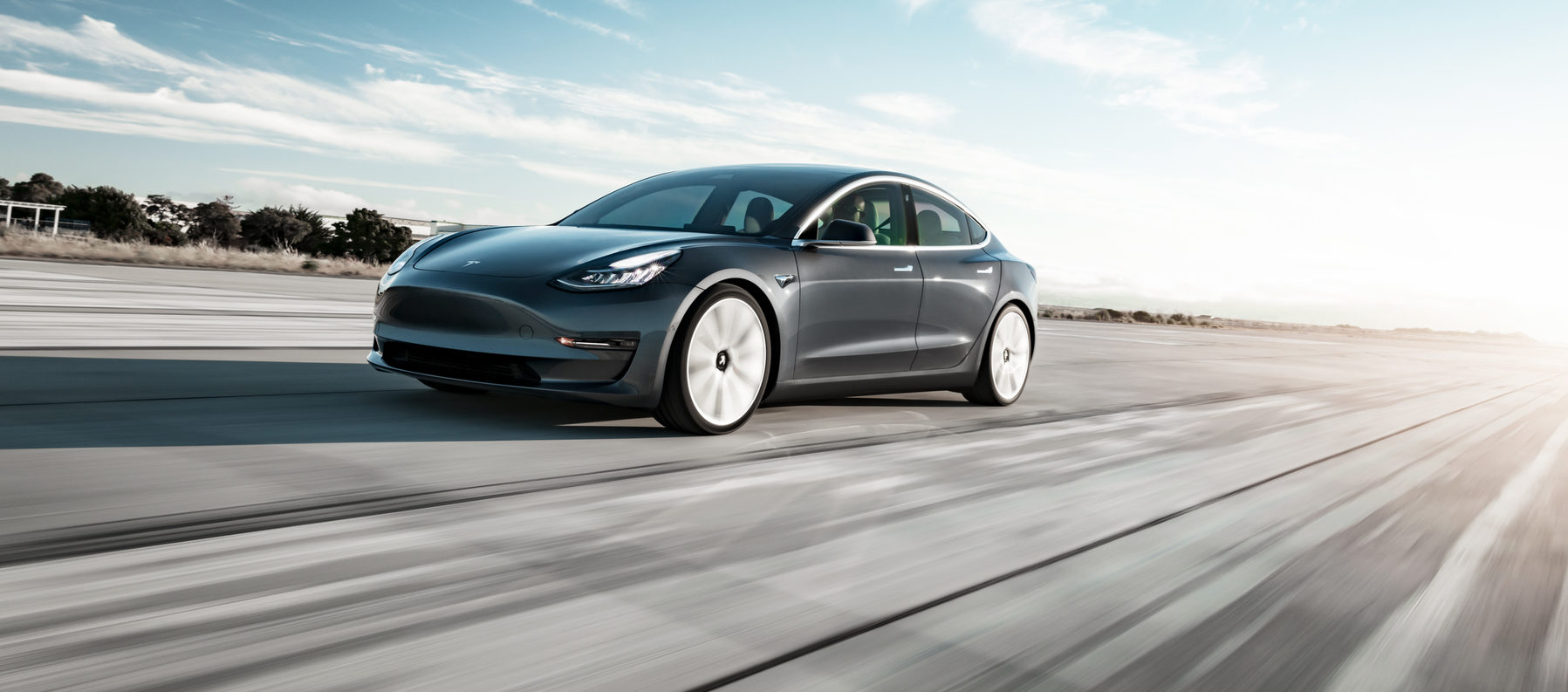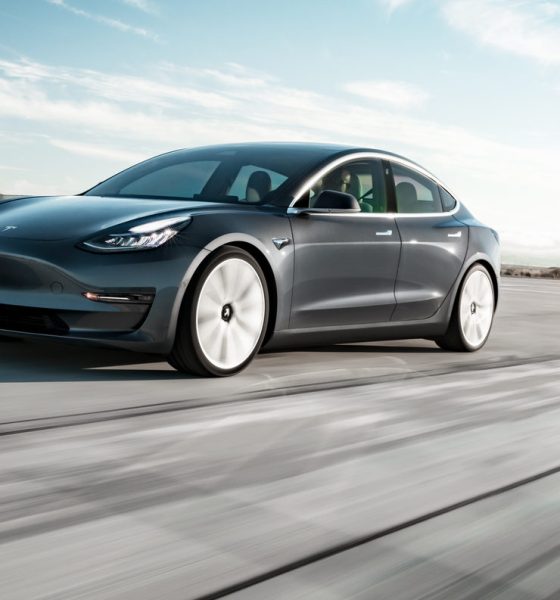

Investor's Corner
Tesla bear gets shot down after insisting that ‘competition’ is coming for TSLA
A Tesla (NASDAQ:TSLA) bear’s arguments about the impending arrival of competitors in the electric car market was boldly shut down in a recent segment on CNBC’s Squawk Box. During the exchange, veteran journalist Phil LeBeau aired what could only be described as a longtime sentiment from Tesla investors: After all those predictions, where are Tesla’s supposed competitors?
The Squawk Box segment featured Tasha Keeney of Ark Invest and Craig Irwin of Roth Capital Partners, each one representing the bull and bear side for TSLA stock. While Keeney reiterated ARK’s optimistic stance on Tesla and its potential in the full self-driving market, Irwin instead focused on what he alleged was the electric car maker’s disadvantage in battery technology. The Tesla bear insisted that Tesla is currently paying $240/kWh for its cells from Japan while Porsche and Volkswagen are paying $250/kWh. This was a point that Phil LeBeau directly addressed, citing the findings of Sam Jaffe from Cairn Energy Research, who estimated that Tesla has reached costs of around $116 per kWh for its battery cells.
The Roth Capital Partners analyst added that he is taking a bearish stance against Tesla now due to the incoming wave of competitors that are coming to the market. Irwin specifically pointed to the Porsche Taycan as one of these vehicles.
“It’s starting this year. That’s why I chose to initiate with a bearish perspective. Porsche is going to come on with the Taycan, you’ve got Kia, you’ve got the I-PACE… You got to look at the history, so the Cayenne, the first thing they said 10, then they said 20, then it became 40. So it ramped very very quickly. They set expectations low, make a lot of money on the front end, and ramp. Porsche, their business is making money. They’re not about, you know, fluffing numbers. So if they think they can sell 30,000 cars into the market over the next 18 months and make a great profit on it, they’ll do it. But they’re not gonna flood the market to a point you know, it compresses margins,” Irwin claimed.
Irwin’s thesis was immediately met by a rebuttal from LeBeau, who noted that the argument for Tesla competitors has been going on for a long time. The CNBC journalist argued that it is better for other carmakers to start showing (not just telling) how they can actually compete with Tesla by releasing a real, compelling electric vehicle.
“I think it poses a problem for Tesla from the standpoint of ‘Let’s finally see this vehicle.’ I honestly believe based on Tesla owners that I’ve talked with as well as those who track the company, we’re tired of hearing ‘the competitors are coming, the competitors are coming.’ Bring it out. Bring it out, and if Porsche’s Taycan is as impressive as the initial indications are, then it will be a threat to Tesla, but until then, this is a little bit like The Boy (Who) Cried Wolf. We hear it all the time. ‘There’s a wave of vehicles coming.’ Well, that wave of vehicles isn’t here yet. It was supposed to be here by 2019. It’s not here yet. When does it get here? If I’m a Tesla investor, I’m not too worried about this argument until we start to see these vehicles,” LeBeau retorted.
Phil LeBeau was actually being quite generous when he noted that the Porsche Taycan will be a threat to Tesla. Porsche is a niche carmaker, and it is a company that prioritizes the exclusivity of its vehicles. At most, the Taycan will eat into the Model S’ sales since they compete in the same segment. The German-made all-electric car from Porsche will not compete in the same mass-market segment as the Model 3, or the Model Y for that matter.
One thing that Tesla skeptics always seem to forget is that electric vehicles from other carmakers will not kill or overwhelm Tesla. Instead, they are vehicles that contribute to the mission of the electric car maker, which is to encourage the world to shift away from the internal combustion engine. Thus, every Taycan and I-PACE that is sold is not a lost sale for Tesla; it is a lost sale for gas and diesel-powered vehicles.
Watch the recent TSLA bull vs. bear debate in CNBC’s Squawk Box in the video below.
Disclosure: I have no ownership in shares of TSLA and have no plans to initiate any positions within 72 hours.

Investor's Corner
Tesla stock closes at all-time high on heels of Robotaxi progress

Tesla stock (NASDAQ: TSLA) closed at an all-time high on Tuesday, jumping over 3 percent during the day and finishing at $489.88.
The price beats the previous record close, which was $479.86.
Shares have had a crazy year, dipping more than 40 percent from the start of the year. The stock then started to recover once again around late April, when its price started to climb back up from the low $200 level.
This week, Tesla started to climb toward its highest levels ever, as it was revealed on Sunday that the company was testing driverless Robotaxis in Austin. The spike in value pushed the company’s valuation to $1.63 trillion.
Tesla Robotaxi goes driverless as Musk confirms Safety Monitor removal testing
It is the seventh-most valuable company on the market currently, trailing Nvidia, Apple, Alphabet (Google), Microsoft, Amazon, and Meta.
Shares closed up $14.57 today, up over 3 percent.
The stock has gone through a lot this year, as previously mentioned. Shares tumbled in Q1 due to CEO Elon Musk’s involvement with the Department of Government Efficiency (DOGE), which pulled his attention away from his companies and left a major overhang on their valuations.
However, things started to rebound halfway through the year, and as the government started to phase out the $7,500 tax credit, demand spiked as consumers tried to take advantage of it.
Q3 deliveries were the highest in company history, and Tesla responded to the loss of the tax credit with the launch of the Model 3 and Model Y Standard.
Additionally, analysts have announced high expectations this week for the company on Wall Street as Robotaxi continues to be the focus. With autonomy within Tesla’s sights, things are moving in the direction of Robotaxi being a major catalyst for growth on the Street in the coming year.
Elon Musk
Tesla needs to come through on this one Robotaxi metric, analyst says
“We think the key focus from here will be how fast Tesla can scale driverless operations (including if Tesla’s approach to software/hardware allows it to scale significantly faster than competitors, as the company has argued), and on profitability.”

Tesla needs to come through on this one Robotaxi metric, Mark Delaney of Goldman Sachs says.
Tesla is in the process of rolling out its Robotaxi platform to areas outside of Austin and the California Bay Area. It has plans to launch in five additional cities, including Houston, Dallas, Miami, Las Vegas, and Phoenix.
However, the company’s expansion is not what the focus needs to be, according to Delaney. It’s the speed of deployment.
The analyst said:
“We think the key focus from here will be how fast Tesla can scale driverless operations (including if Tesla’s approach to software/hardware allows it to scale significantly faster than competitors, as the company has argued), and on profitability.”
Profitability will come as the Robotaxi fleet expands. Making that money will be dependent on when Tesla can initiate rides in more areas, giving more customers access to the program.
There are some additional things that the company needs to make happen ahead of the major Robotaxi expansion, one of those things is launching driverless rides in Austin, the first city in which it launched the program.
This week, Tesla started testing driverless Robotaxi rides in Austin, as two different Model Y units were spotted with no occupants, a huge step in the company’s plans for the ride-sharing platform.
Tesla Robotaxi goes driverless as Musk confirms Safety Monitor removal testing
CEO Elon Musk has been hoping to remove Safety Monitors from Robotaxis in Austin for several months, first mentioning the plan to have them out by the end of 2025 in September. He confirmed on Sunday that Tesla had officially removed vehicle occupants and started testing truly unsupervised rides.
Although Safety Monitors in Austin have been sitting in the passenger’s seat, they have still had the ability to override things in case of an emergency. After all, the ultimate goal was safety and avoiding any accidents or injuries.
Goldman Sachs reiterated its ‘Neutral’ rating and its $400 price target. Delaney said, “Tesla is making progress with its autonomous technology,” and recent developments make it evident that this is true.
Investor's Corner
Tesla gets bold Robotaxi prediction from Wall Street firm
Last week, Andrew Percoco took over Tesla analysis for Morgan Stanley from Adam Jonas, who covered the stock for years. Percoco seems to be less optimistic and bullish on Tesla shares, while still being fair and balanced in his analysis.

Tesla (NASDAQ: TSLA) received a bold Robotaxi prediction from Morgan Stanley, which anticipates a dramatic increase in the size of the company’s autonomous ride-hailing suite in the coming years.
Last week, Andrew Percoco took over Tesla analysis for Morgan Stanley from Adam Jonas, who covered the stock for years. Percoco seems to be less optimistic and bullish on Tesla shares, while still being fair and balanced in his analysis.
Percoco dug into the Robotaxi fleet and its expansion in the coming years in his latest note, released on Tuesday. The firm expects Tesla to increase the Robotaxi fleet size to 1,000 vehicles in 2026. However, that’s small-scale compared to what they expect from Tesla in a decade.
Tesla expands Robotaxi app access once again, this time on a global scale
By 2035, Morgan Stanley believes there will be one million Robotaxis on the road across multiple cities, a major jump and a considerable fleet size. We assume this means the fleet of vehicles Tesla will operate internally, and not including passenger-owned vehicles that could be added through software updates.
He also listed three specific catalysts that investors should pay attention to, as these will represent the company being on track to achieve its Robotaxi dreams:
- Opening Robotaxi to the public without a Safety Monitor. Timing is unclear, but it appears that Tesla is getting closer by the day.
- Improvement in safety metrics without the Safety Monitor. Tesla’s ability to improve its safety metrics as it scales miles driven without the Safety Monitor is imperative as it looks to scale in new states and cities in 2026.
- Cybercab start of production, targeted for April 2026. Tesla’s Cybercab is a purpose-built vehicle (no steering wheel or pedals, only two seats) that is expected to be produced through its state-of-the-art unboxed manufacturing process, offering further cost reductions and thus accelerating adoption over time.
Robotaxi stands to be one of Tesla’s most significant revenue contributors, especially as the company plans to continue expanding its ride-hailing service across the world in the coming years.
Its current deployment strategy is controlled and conservative to avoid any drastic and potentially program-ruining incidents.
So far, the program, which is active in Austin and the California Bay Area, has been widely successful.








